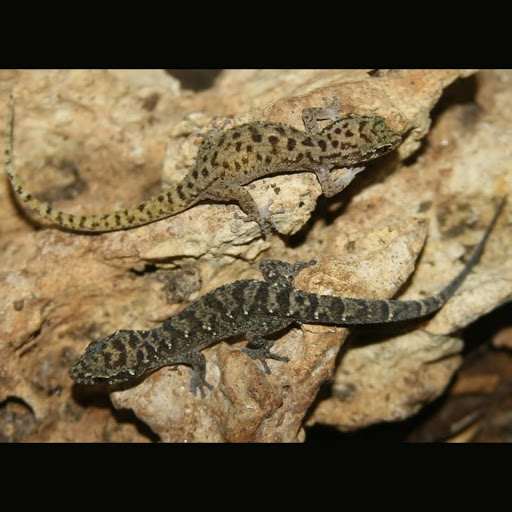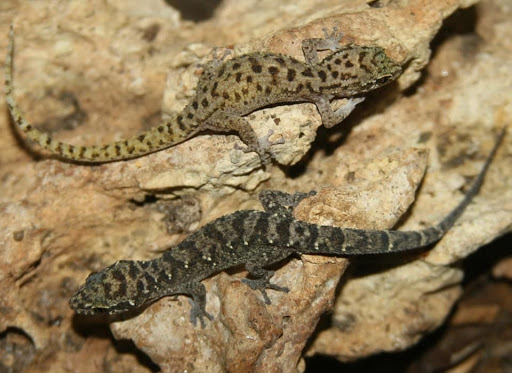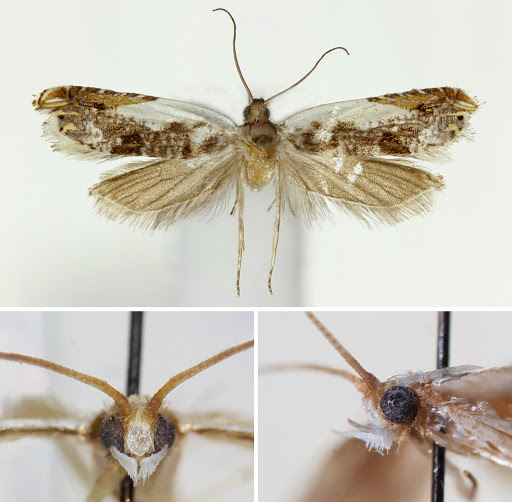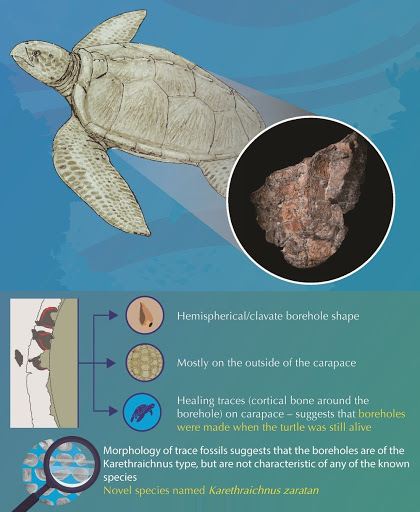[Most Recent Entries] [Calendar View]
Wednesday, September 2nd, 2020
| Time | Event | ||||||
| 2:43a | [Herpetology • 2020] Dixonius pawangkhananti จิ้งจกดินชะอำ • A New Limestone-dwelling Leaf-toed Gecko (Gekkonidae: Dixonius) from Coastal Hills in Cha-am, peninsular Thailand
Abstract We describe Dixonius pawangkhananti sp. nov. from coastal limestone hills in Cha-am District, Phetchaburi Province, peninsular Thailand. The new species differs from all currently recognized Dixonius by the following combination of morphological characters and pattern: maximal known snout-vent length of 42.6 mm; 16 longitudinal rows of dorsal tubercles; 30 to 32 paravertebral scales; 16 longitudinal rows of ventral scales across the abdomen; six precloacal pores in males, no pores in females; a marked canthal stripe; and a sexually dimorphic dorsal pattern consisting of bands (males) or blotches (females). This description brings the number of Dixonius species to ten, with four species endemic to Thailand. Keywords: Gekkonidae, Thai-Malay Peninsula, Dixonius pawangkhananti sp. nov.
Dixonius pawangkhananti sp. nov. Etymology. The specific epithet honors the Thai zoologist Parinya Pawangkhanant (Agriculture University of Phayao, Phayao, and Rabbit in the Moon Foundation, Ratchaburi), for his contributions to the herpetology of Thailand, and who is one of the collectors of the type-series. We suggest the following common names: Djing-djok din Cha-am (Thai: จิ้งจกดินชะอำ), Cha-am leaf-toed gecko (English), Dixonius de Cha-am (French), Cha-am Blattfingergecko (German).
Olivier S. G. Pauwels, Nirut Chomngam, Henning Larsen and Montri Sumontha. 2020. A New Limestone-dwelling Leaf-toed Gecko (Gekkonidae: Dixonius) from Coastal Hills in Cha-am, peninsular Thailand. Zootaxa. 4845(1); 97–108. DOI: 10.11646/zootaxa.4845.1.7 | ||||||
| 3:13a | [Entomology • 2020] Nabangana koreana • First Report of the Tribe Chlidanotini (Lepidoptera: Tortricidae) from Korea, with the Description of A New Genus and Species
Abstract Nabangana gen. nov. is described and illustrated from Korea. The new genus and its type species Nabangana koreana sp. nov. represents the first record of the tortricid tribe Chlidanotini from Korea. Key words: Chlidanotinae, Korea, Nabangana, new taxa
Tribe Chlidanotini Meyrick, 1906 Type genus: Chlidanota Meyrick, 1906 Journal of the Bombay Natural History Society, 17 (2): 412. Genus Nabangana gen. nov. Type species: Nabangana koreana sp. nov. Diagnosis. The new genus is somewhat similar in appearance to members of the tribe Enarmoniini, but it can be easily distinguished by the concaved termen beneath the apex in the forewing, the presence of hami and a subtriangular lobe on the valva in male genitalia, and a signum bearing numerous long spines in female genitalia. Also, the new genus is similar to the related genera, Trymalitis Meyrick, 1905, Caenognosis Walsingharn, 1900, Leurogyia Common, 1965, and Daulocnema Common, 1965, but it is different from them by the wing venation as written in the Discussion. The male genitalia (Figs 5, 5a) are similar to those of Leurogyia peristictum Common, 1965, but can be distinguished by the rather narrow uncus, with sub-acute apex; the stick-shaped hami with broadened apex; the rather rounded valva, curved at middle of ventral margin with a subtriangular lobe medially. Aedeagus nearly straight with bifid apex, cornuti absent. The female genitalia (Fig. 6) are in general similar to those of allied genera, but are characteristic especially by the sclerotized ductus bursae near the entrance, and the signum with a bundle of spines, and the accessory sac originating from the head of the signum. Distribution. The genus occurs only in Korea. Etymology. The species name of the new genus is derived from the common name for “moth” in Korea (Nabang). Nabangana koreana sp. nov. Diagnosis. The new species is similar to members of the allied genera, Caenognosis incisa Walsingham, 1900, Leurogyia peristictum Common, 1965, and Daulocnema epicharis Common, 1965 in wing pattern, color, and the shape of the forewing termen, but it can be distinguished by the elongate uncus, the golf club-shaped hami, the curved costa of the valva, and a nearly straight aedeagus. In wing venation, the new species is quite similar to Leurogyia peristictum, with the forked R4 and R5 near the apex in the forewing; however, in the latter, the veins are positioned near the apex at the costa and beneath the apex at the termen, respectively, whereas in N. koreana R4 and R5 are positioned together near the apex at the costa. Etymology. The species name is derived from the type locality (Korea). Bong-Kyu Byun. 2020. First Report of the Tribe Chlidanotini (Lepidoptera: Tortricidae) from Korea, with the Description of A New Genus and Species. Zootaxa. 4845(2); 283–287. DOI: 10.11646/zootaxa.4845.2.9 | ||||||
| 3:18p | [Herpetology • 2020] Zhangixalus jodiae • A New Species of the Genus Zhangixalus (Amphibia: Rhacophoridae) from Vietnam
ABSTRACT A new rhacophorid species is described from Vietnam on the basis of nine specimens collected in Quan Ba District, Ha Giang Province, northeastern Vietnam. The new species is morphologically similar to Zhangixalus pinglongensis, Z. dorsoviridis, and Z. nigropunctatus, however, it differs from the latter by having the flank cream with large black blotches on axilla and groin. The genetic distance between the new species and Zhangixalus pinglongensis, Z. dorsoviridis and Z. nigropunctatus is >3.57% (16S mtDNA gene fragment). Zhangixalus jodiae sp. nov. can be distinguished from all other species of Zhangixalus and other small rhacophorid species from Southeast Asia by a combination of the following characters: size small (SVL 36.1–39.8 mm in males); head as long as wide; vomerine teeth present; dorsal surface of head and body green without spots; axilla cream with large black blotches, groin and front-rear parts of the thigh, ventral surface of tibia black with orange blotches; lower jaw region greyish, chest and belly cream. KEYWORDS: Zhangixalus jodiae sp. nov., molecular phylogeny, taxonomy, Ha Giang Province Zhangixalus jodiae sp. nov. Etymology. The specific epithet is in honour of Dr. Jodi Rowley from the Australian Museum for her great contribution to amphibian taxonomy in Asia. We propose the following colloquial names: Jodi’s Treefrog (English) and Ếch cây jô-đi (Vietnamese). Tao Thien Nguyen ,Hoa Thi Ninh,Nikolai Orlov,Truong Quang Nguyen and Thomas Ziegler. 2020. A New Species of the Genus Zhangixalus (Amphibia: Rhacophoridae) from Vietnam. Journal of Natural History. Amphibian taxonomy: Early 21st century case studies. DOI: 10.1080/00222933.2020.1754484 | ||||||
| 3:27p | [Paleontology • 2020] Karethraichnus zaratan • Mobile Home for Pholadoid Boring Bivalves: First Example from A late Cretaceous Sea Turtle in Hokkaido, Japan
ABSTRACT Trace fossils preserved in fossilized tissues provide a key resource for exploring the paleoecology of past ecosystems. Endobiont organisms are commonplace in modern ecosystems, but their trace fossils on vertebrates are rare as the organisms usually attack or attach to soft tissue. Here, we report the novel occurrence of flask-shaped boreholes representing the ichnotaxon Karethraichnus n. isp. in the carapace of the basal leatherback sea turtle Mesodermochelys sp. from the Upper Cretaceous of northern Japan. The distribution of the boreholes was determined by observing the carapace surface. Using X-ray computed tomography, we were also able to produce a 3D reconstruction of the whole carapace and examine a cross section of a borehole to analyze the histological aspects of the bone. In total, 43 holes were observed, 12 holes contained probable pholadoid bivalves, and 32 holes were not bored entirely through the carapace. Some of the bivalves found in the holes are larger than the aperture of the hole, suggesting that they continued to grow during boring. The holes are hemispherical to clavate in shape and developed on the exterior side of the carapace. Healing traces, i.e., repairing of bone, can be observed at the surface of the holes. Our observations strongly suggest that these pits were bored by pholadoid bivalves while the turtle was alive. This is the first report of the behavior of boring bivalves as sea-turtle endobionts boring into a unique free-living, i.e., “swimming substrate”. SYSTEMATIC ICHNOLOGY Karethraichnus zaratan isp. nov. Etymology.— From the name of the mythical turtle ‘‘Zaratan’’ in the Middle Eastern legend. It was easily mistaken for small islands due to its huge size, and so animals and sailors accidentally settled on its carapace. Holotype.— Boreholes in the carapace of the basal leatherback sea turtle Mesodermochelys sp. from the Late Cretaceous of northern Japan, which is housed at Nakagawa Museum of Natural History (collection number: NMV 50). This carapace contains 43 boreholes (paratypes) and the one selected as a holotype is from the carapace fragment (Fig. 4; NMV 50-a). Kei Sato and Robert G. Jenkins. 2020. Mobile Home for Pholadoid Boring Bivalves: First Example from A late Cretaceous Sea Turtle in Hokkaido, Japan. PALAIOS. 35(5); 228–236. DOI: 10.2110/palo.2019.077 Life in a nutshell: New species found in the carapace of late cretaceous marine turtle phys.org/news/2020-08-life-nutshell-spec |
| << Previous Day |
2020/09/02 [Calendar] |
Next Day >> |














